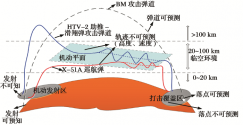Basically equal to USN pacific fleet and JMSDF combined in counter force of conventional A2AD (not HGVs, ASBMs, HCMs, and whatever else China has/developing). This doesn't mean 1:1 and same capability and modernity but a direct counter e.g. for every two anti-ship ordinance an available F-35 can launch, there can be two LR missiles for the F-35, four MR missiles for intercepting ordinance, and for example 2 HQ-10 missiles and 1000 rounds and maybe 5 seconds of fire time for Type 730/1130. Rather than simply having one J-35 with more or less exactly equal ability to do the same against a US fleet.
This stuff is near impossible to determine accurately and I'm not suggesting that but PLAN and PLAAF are very far from achieving numerical parity here even if tech parity or superiority in some platforms are achieved e.g. Burke flight II compared to Type 055 and SM-6 compared to the latest HHQ-9. The gaps in numbers for surface fleet, carriers, fighter wing are too low and sub warfare is quite unknown. On submarines themselves, Type 093 even improved ones are nowhere near the current gen US SSNs. Type 039A is only comparable to Japanese diesel electrics. 096 will close the gap but the numbers gap is huge.
A2AD weapons like ASBMs, HGVs, HCMs etc are what hold the US back. Of course China's current naval capability is very strong close to its coast with land based support and USN operating in this area is really stretched thin. Their aim is to create a 6th gen aircraft that enhances operational range several times the distance of F-18 and F-35 so their carriers can remain well outside of Chinese A2AD land based weapons. China is countering with putting into service, ship borne ASBM, HGV, and HCM. This is an arms race struggle of engagement range. Until China's navy and airforce is built up to the numbers of at least the entire USN pacific fleet, a great portion of the deterrence fall onto the shoulders of the PLARF firing hypersonics and anti ship ballistic missiles. Being able to do this via air and ship is a great additional boost though. When PLAN and PLAAF get to those numbers of in service highest tier platforms, the deterrence can be relied on that alone. Even if PLAN trade 3 for 1 equivalents, that's a huge part of USN gone and tens of thousands of lives lost for USN and more than enough political deterrence.

